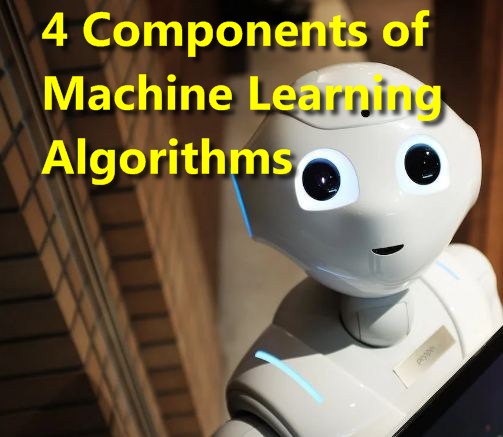Machine learning algorithms are the core components of machine learning systems that enable computers to learn and make predictions or decisions from data. These algorithms consist of several key components.

The four components of machine learning algorithms are:
- Data: Machine learning algorithms are trained on data. The data can be labeled or unlabeled. Labeled data is data where the output is known. Unlabeled data is data where the output is unknown.
- Model: The model is the algorithm itself. It is the mathematical representation of the data that the algorithm learns from.
- Training: The training process is where the algorithm learns from the data. The algorithm adjusts its parameters in order to minimize the error on the training data.
- Evaluation: The evaluation process is where the algorithm is tested on new data that it has never seen before. The algorithm is evaluated on its accuracy, which is the percentage of predictions that the algorithm gets correct.
These four components are essential for any machine learning algorithm. The quality of the data, the model, the training process, and the evaluation process will all affect the performance of the algorithm.
Here is the detailed explanation of these components of Machine Learning algorithms:
- Data: Data is the foundation of any machine learning algorithm. It includes the input features and the corresponding target values (labels or outcomes). Data can be structured or unstructured and is typically divided into training data for model development and testing or validation data for evaluating the model’s performance. High-quality, representative, and sufficiently diverse data is crucial for the success of a machine learning algorithm.
- Model: The model is the mathematical or computational representation that the machine learning algorithm uses to capture patterns, relationships, and insights from the data. It consists of a set of parameters and functions that are optimized during the training process to make predictions, classifications, or other tasks. The choice of the model architecture (e.g., linear regression, neural networks, decision trees) plays a critical role in determining the algorithm’s capabilities and performance.
- Algorithm (Learning Algorithm): The learning algorithm is the core of a machine learning system. It defines how the model parameters are adjusted based on the data during training. The goal of the learning algorithm is to find the best model that minimizes the error between its predictions and the actual data. Learning algorithms can be categorized into different types, such as supervised learning, unsupervised learning, reinforcement learning, and semi-supervised learning, depending on the type of data and learning objectives. Some common learning algorithms include gradient descent, k-means clustering, and decision tree learning.
- Evaluation and Optimization: Machine learning algorithms must be evaluated to assess their performance and make improvements. The evaluation process typically involves metrics like accuracy, precision, recall, F1-score, or mean squared error, depending on the specific problem and learning type. After evaluation, the model can be optimized to enhance its performance. Optimization techniques include hyperparameter tuning (adjusting model parameters that are not learned from the data), regularization, cross-validation, and feature engineering.
Additionally, these components often go through a repetitive cycle:
- Data Collection and Preprocessing: Data is collected, cleaned, and prepared for training and testing.
- Model Training: The algorithm learns from the training data and optimizes the model parameters.
- Model Evaluation: The model is tested on validation or test data to assess its performance.
- Model Optimization: Adjustments are made to the model, algorithm, or data preprocessing to improve performance.
- Deployment: Once the model meets the desired performance criteria, it can be deployed in real-world applications.
Elaborate 4 Components with Example
Here is an example of how these four components work together in a simple machine learning algorithm:
Suppose we want to train a machine learning algorithm to predict whether a customer will churn (cancel their subscription) or not. We can use the following data:
- Customer ID
- Customer name
- Customer email
- Customer subscription plan
- Customer support tickets opened
- Customer support tickets resolved
- Customer churn (yes or no)
We can then choose a machine learning algorithm, such as Naive Bayes. The Naive Bayes algorithm is a supervised learning algorithm, which means that it requires labeled data to train.
We can then train the Naive Bayes algorithm using the data that we collected. The algorithm will learn the relationships between the different features and the target variable (churn).
Once the algorithm is trained, we can evaluate its performance on a new dataset that it has never seen before. This will give us an idea of how well the algorithm will generalize to new data.
If the algorithm performs well on the evaluation dataset, then we can deploy it to production. This means that we can start using the algorithm to predict whether new customers will churn or not.
The four components of machine learning algorithms are essential for training and deploying effective machine learning models.
![]()